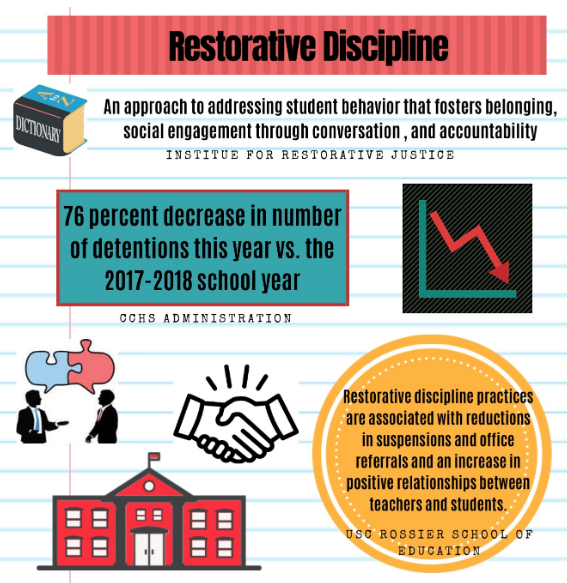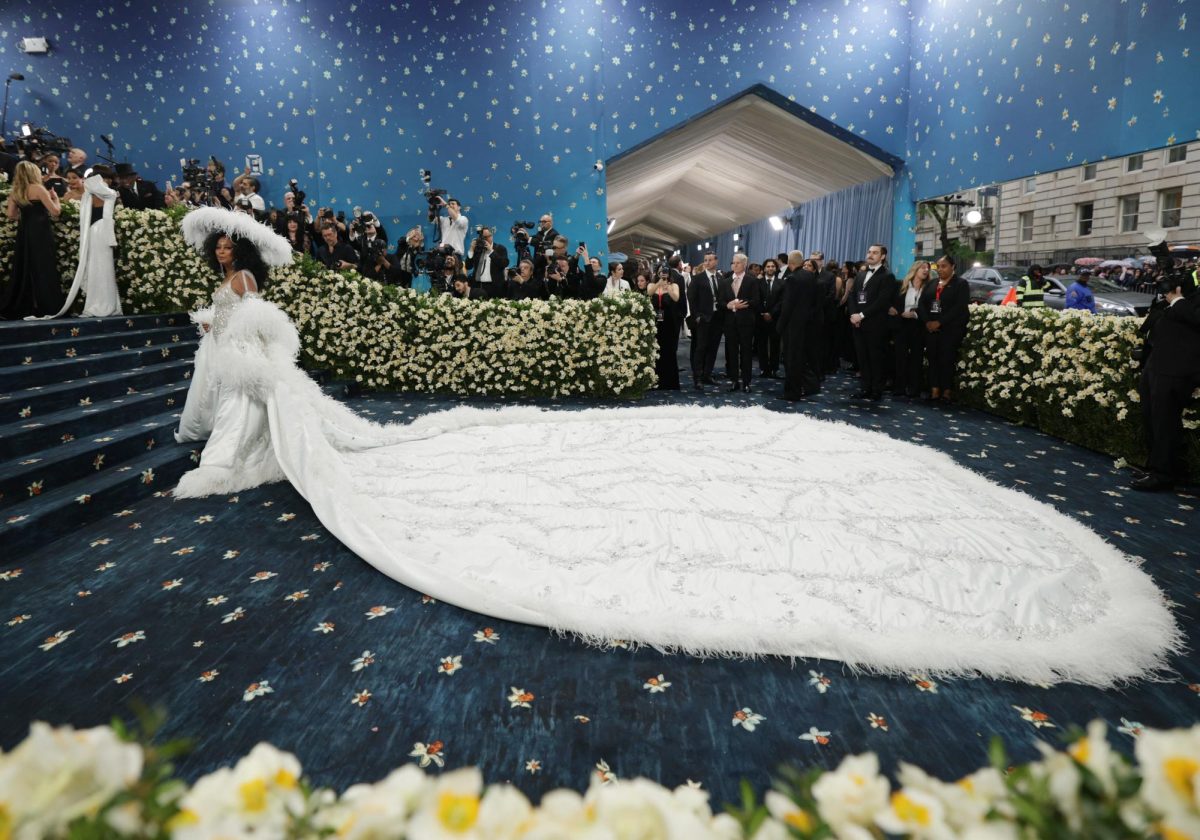Restoration vs. detention

Infographic statistics from the Institute of Restorative Justice, the Cathedral Catholic High School Administration, and the USC Rossier School of Education.
November 6, 2018
On a sunny San Diego afternoon at Cathedral Catholic High School, the final school bell dinged loudly, while the only sounds heard from the feared detention classroom were sighs and snores. Students in detention, all wearing blank expressions across their faces, were either slumped over wooden desks or staring at the ticking clock.
This scene is one of the past at CCHS as of the 2018-2019 school year.
CCHS administration began replacing traditional detention-based discipline with restorative discipline procedures by focusing on conversing with students to solve and prevent issues.
According to the Institute for Restorative Justice, restorative discipline is an approach to addressing student behavior that fosters belonging, social engagement through conversation, and accountability.
“Restorative discipline invites students to be a part of the solution,” CCHS Dean of Students Mr. Michael Wallace said. “There are consequences under both policies but detention consequences are cookie cutter while restorative are customized to benefit the student learning process.”
Unlike years past, CCHS students will now be called into a conversational meeting with an assistant dean of students once they have reached three tardies or three dress code infractions per semester, according to the updated student handbook.
“It’s trying to have the conversation right in the moment,” CCHS Assistant Dean of Students Dr. Kathy McIntosh said. “We will say, ‘Come on in, let’s talk about what’s really going on,’ instead of coming to the office only when students are in trouble. We want them to come here when they need help.”
Students who have received five tardies or have been absent five times to a particular class per semester will be called to meeting with parents and Mr. Manuel Terzoli, an Assistant Dean of Students. All will discuss how and why class is missed, brainstorming ideas for improvement in an attendance contract, Dr. McIntosh said.
Additionally, if a student commits three detention offenses other than being tardy or breaking dress code, a meeting with the dean of students will be arranged and appropriate consequences will be issued.
“Restorative discipline does not mean no consequences,” CCHS principal Dr. Kevin Calkins said. “There are consequences for misbehavior and for what students do. But the conversations you have are better conversations because it is not about punishment. It is about care for the individual.”
This disciplinary change not only affects students of CCHS, but also impacts teachers. Teachers still have the option to hand out detentions to students, but are highly encouraged to find alternate solutions, according to Dr. McIntosh, who is also involved with teacher training surrounding how to use restorative discipline in the classroom.
“We are now sitting down with all the teachers to ask them to try [avoiding detentions] including in some cases giving them a list of questions to try to determine what the real issue [regarding students] is,” Dr. McIntosh said.
CCHS administration kicked off this disciplinary shift by implementing respect agreements into all classes, in which students discussed and agreed on examples of respect between students, teachers, and administration.
“The respect agreement was the first step to start the conversation,” Dr. McIntosh said. “That way, if there is an incident in the classroom, the teachers can remind the student he or she was apart of that conversation. [students] cannot say they didn’t know.”
While restorative discipline was officially implemented to CCHS this school year, Dr. Calkins wanted to introduce restorative discipline for some time.
“Discipline literally means to change behavior,” Dr. Calkins said. “In my previous schools, I was always frustrated with this pattern and cycle of punishment and discipline and things never changing. So then I researched and learned about restorative discipline, and I knew right away that this is what should be the case.”
Dr. Calkins believes restorative discipline connects with the principles of the Catholic faith which are highly integrated into school, sports, and relationships at CCHS.
“If you have a way of working with students that is restorative, that is redemptive, that aligns perfectly with our faith,” Dr. Calkins said. “So to me, restorative discipline is really the only way you should be doing discipline in a faith-based school.”
During a quarter into the 2018-2019 school year, administration is analyzing and measuring the success of this new disciplinary method.
The number of detentions this year compared to last year during the same time period has decreased 76 percent, according to Mr. Wallace.
The decline in the number of detentions and repeat offenses is the most clear way to measure the new system, according to Dr. Calkins.
While administration is seeing a clear decrease in detentions, the majority of their data regarding the outcomes of restorative discipline is qualitative, based on student attitude.
Dr. McIntosh detailed a specific account of restorative discipline in action about a teacher reporting that a student admitted they had thought about cheating, remembered the respect agreements, and decided to simply tell the teacher she was not prepared.
“This is a better outcome because this leads to a conversations, and the teachers have been very good about working together,” Dr. McIntosh said.
Full implementation of restorative discipline, which administration is still planning, will take place in the 2019-2020 school year. This year acts as an experimental and transitioning time to get students and staff accommodated.
“Next year we are all in,” Dr. Calkins said. “[Restorative discipline] is brand new not even fully implemented yet, but my hope is that it will change the culture and the nature of relationships between adults and students on the campus, and I truly think it will.”






















































